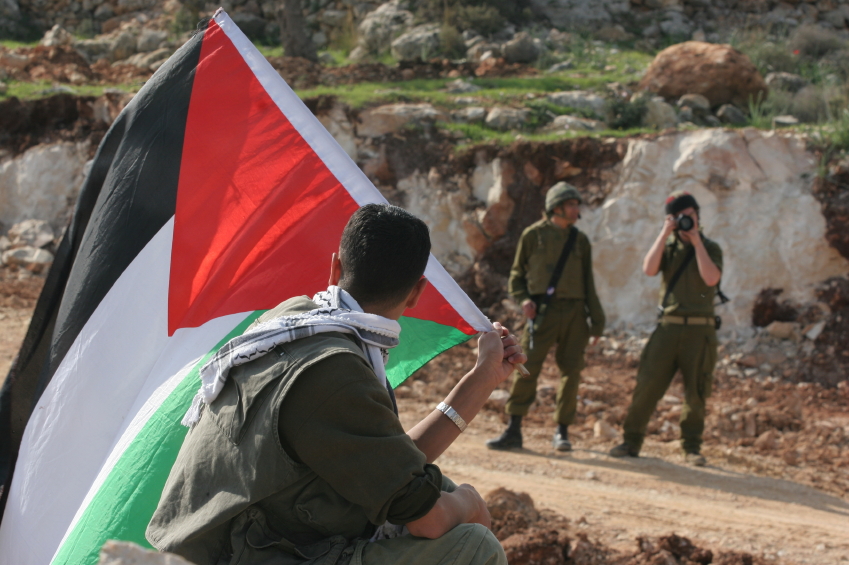Israel/Palestine: Fears of third intifada
Since the riots on the Temple Mount in mid-September, seemingly random street violence has spiked. Israeli forces have responded with harsh crackdowns.
Since the riots on the Temple Mount in mid-September, seemingly random street violence has spiked. Israeli forces have responded with harsh crackdowns. The following article was published in the January-February 2016 issue of NewsNotes.
Attacks by individual Palestinians against Israelis with simple weapons like kitchen knives and scissors are on the rise – by the end of November, the Israel Defense Forces reported 100 stabbings, 37 shootings, and 22 car rammings since September. Those carrying out attacks have largely been men in their teens or 20s targeting Israelis and then being killed or badly injured by Israeli forces.
The response from Israel has been blanketed and severe – from October through December, the Palestine Red Crescent reports having treated 489 people with live bullet injuries, 140 with rubber bullet injuries, 602 afflicted with tear gas, and 107 beaten during raids by Israeli forces. This developing trend, along with increasing demonstrations and riots, has sparked rumors of a possible third intifada, called the “knife intifada” by international media, or the “popular intifada” by some Palestinians.
Shin Bet, Israel’s internal security agency, reports that these youths are acting “based on feelings of national, economic and personal deprivation,” rather than an organized offensive, noting that in some cases the attack provides a way to escape a “bleak reality which they perceive is unchangeable.” Israeli Defense Forces (IDF) Brigadier General Guy Goldstein said at an academic conference that he believed the violence would not end “unless there is some significant change, partly if not mostly on the diplomatic front” – a comment which received much attention as it was perceived to reveal the IDF’s opposition to Prime Minister Netanyahu’s current strategy to quell the unrest with force.
In recent months Secretary of State John Kerry has also been critical of Netanyahu’s government, saying quite candidly in an interview published in The New Yorker, “It is not an answer to simply continue to build in the West Bank and to destroy the homes of the other folks you’re trying to make peace with and pretend that that’s a solution.” President Obama has also expressed the sentiment that Israel’s settlement expansion is an impediment to peace, yet the administration is considering a recent request from Netanyahu for an increase in aid from $31 billion to $50 billion over 10 years, perhaps as a concession for the Iran nuclear agreement.
Meanwhile, in 2015, the international community at large has shown increasing support for recognition of Palestine as a state, and treating it as such. Since the UN General Assembly vote to recognize Palestinian statehood in 2012, dozens of nations have officially recognized Palestine, including the Vatican. Last June the Vatican took it one step further, signing its first treaty with the Palestinian Authority. This is an unprecedented agreement between the Vatican and a Muslim-majority country, outlining provisions for religious freedom in Palestine (meaning, protection for Christians), and also affirms the Holy See’s support for a two-state solution to the conflict with Israel.
In early January, Makarim Wibisono, the UN Special Rapporteur for the Palestinian Territories on the situation of human rights, regretfully submitted his resignation, stating that his “efforts to help improve the lives of Palestinian victims of violations under the Israeli occupation have been frustrated every step of the way.” After repeated attempts to access the West Bank and Gaza to act as an “impartial and objective observer” he said that he felt he had no choice but to leave his post with the hope that his successor will be given more access. He noted that the State of Palestine was fully cooperative with his mandate throughout his tenure.
With a steady stream of bad news coming from the region it is easy to become disillusioned, yet every day there are also signs of peace and hope. The Parents Circle Families Forum – a group of Israelis and Palestinians whose family members have died in the conflict and who work together for reconciliation and a better future – continues to be a symbol of the bond of humanity in the face of adversity. For an inspiring story, visit: http://www.theparentscircle.com.
Photo: Boy with Palestinian flag

